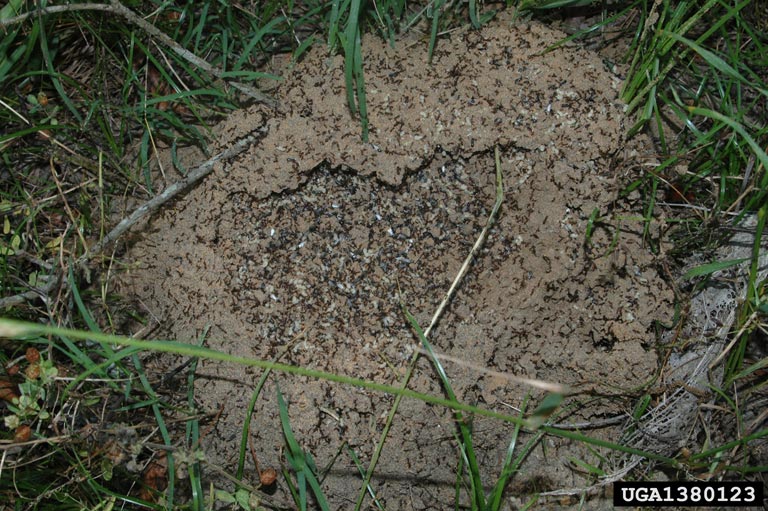Lawn & Garden

Fire ants swarm beginning during the spring and continue through late fall. Swarming fire ants are especially common a day or two after a rain event that has been preceded by a dry period.
Why Swarming Occurs
Swarming is also called dispersal flight, which is the way fire ant colonies reproduce and expand their range. Workers make exiting holes on top of the mound and winged, unmated male and female reproductives exit the mound.
These unmated males and females immediately take flight and mate in the air, often several hundred feet above the ground. They may fly a considerably long distance—sometimes as far as 10 miles from the original colony—although most of them descend to the ground at a much shorter distance.
After mating, the males die. Females—the queens—land on the ground, shed their wings, and burrow into the soil to form their own nests. Only a very small percentage of queens survive after landing. Most queens are killed by other predators such as foraging ants (especially other fire ants), birds, spiders, and some lizards. If a queen ant survives, she lays eggs in the nest to start a new colony.
How to Know if Flying Ants are Fire Ants
Fire ant swarmers can be easily differentiated from termite swarmers by three of their characteristics:
- narrow “waist” between thorax and abdomen
- front wings are longer than hind wings
- elbowed antennae
Fire ant swarmers can also be easily identified from other ant species by their relatively large body (approximately 1/3 of an inch long) and two nodes on the petiole.
Swarming Fire Ants May Cause Annoyance
Beside facilitating range expansion and starting new colonies, winged fire ants can also bite or sting. However, it is highly unlikely the ants will bite and sting you while flying or searching for a nesting site. Winged fire ants are less aggressive than workers because their only goal is to mate and reproduce.
Swarming fire ants are attracted to reflective surfaces. The shiny surface reflection of water in your pool, a lake, or a pond makes a great landing place. Flying ants themselves in the pool are an annoying problem. The ants in the pool do not sting, but they can be a cause of fish kills. They carry poison sacs in their body that contain a toxin that is reportedly deadly to fish if the ants are consumed. There are reports that fish died from fire ant ingestion.
Additionally, finding fire ants swarming in your yard or on your farm can be an important signal that a new wave of fire ant colonies will soon establish mounds in the surrounding landscape.
What to do with Fire Ant Swarmers
Clean up the fire ant swarmers. You can get rid of them with a vacuum, whether a handheld or full-sized vacuum with a hose attachment. Immediately remove the vacuum bag, seal it in air-tight bag so the ants cannot find their way out. Spraying pesticides after they land on ground and before they dig into the soil will also kill them.
To get rid of swarming fire ants that land in your pool, floating items like tennis balls can be used. Ants are not good swimmers and they will attach themselves to the floating balls. After that, collect the tennis balls and kill the ants on them.

